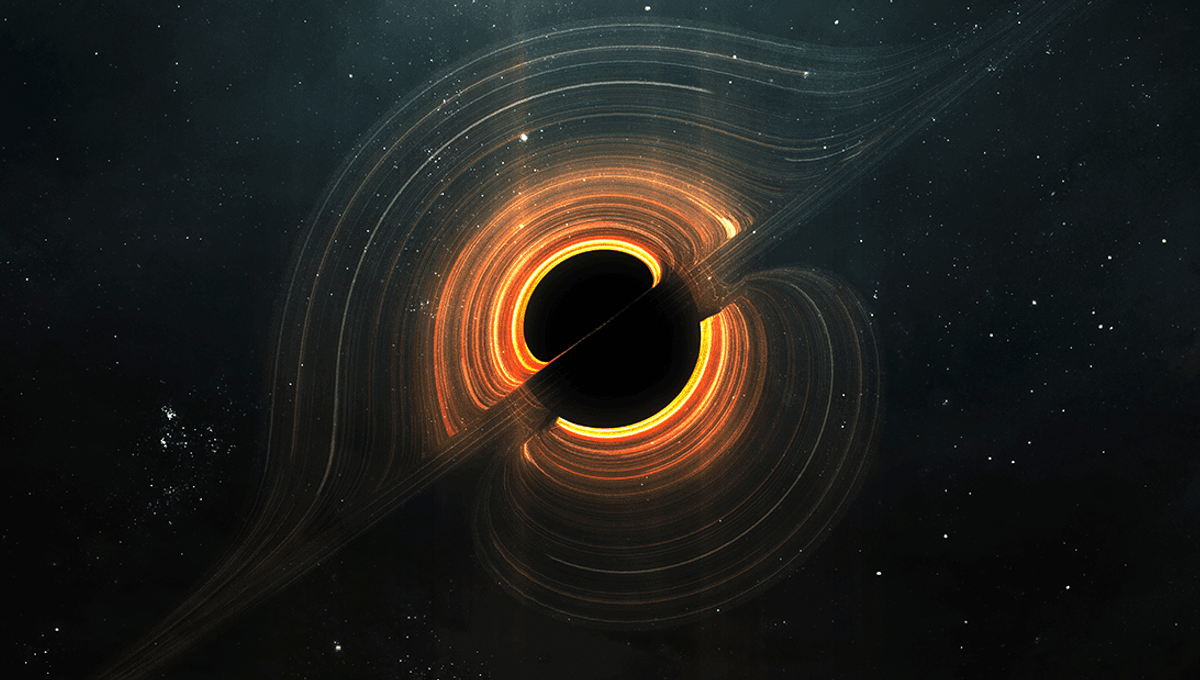
A team of physicists have proposed a new cosmological model – dubbed the “black hole universe” – that suggests that our universe did not begin at the Big Bang.
For a long time the universe was assumed to be static, a potentially infinite pool of space that is neither expanding nor contracting. But during the 1920s, astronomer Edwin Hubble began measuring the red shift – the amount light is shifted to the red end of the spectrum – and noticed that it varied depending on how fast a distant object is receding from us, with more distant galaxies appearing to be receding from us faster.
After many, many careful observations of the red shift of galaxies appearing to show that the universe was expanding, physicists attempted to explain it by tracing the universe back in time, and matter was closer together. The result, backed up by the discovery of the Cosmic Microwave Background (CMB) – thought to be the faint “afterglow” of the first light in the universe – was the Big Bang model. In this model, the universe was once crushed down to a singularity, before it expanded to the universe we know and hate love today.
We’ve come a long way in our study of the universe’s beginnings since then, as well as our understanding of the universe’s expansion. But there are problems with the model, which some physicists believe point to the inflation/Big Bang model being incorrect.
“For one, the Big Bang model begins with a singularity – a point of infinite density where the laws of physics break down,” writes Enrique Gaztanaga, Professor at the Institute of Cosmology and Gravitation, University of Portsmouth, and lead author of the new paper, in a piece for The Conversation.
“This is not just a technical glitch; it’s a deep theoretical problem that suggests we don’t really understand the beginning at all.”
Though the dark energy/cold dark matter model remains our best understanding of the universe, Gaztanaga is unsatisfied with the idea of cosmic inflation and dark energy, calling them “mysterious” components that we have never observed directly. In the new paper, the team took a different approach, attempting to ask what happens when an overly dense region of matter collapses under gravity.
This, as you might have noticed, is a highly studied topic, but the team believes they have new insights from the exercise. It all rests on the Pauli exclusion principle, sometimes termed the “quantum exclusion principle”, which states that no two identical fermions can occupy the same quantum state within a system at the same time. Looking at what happens when matter collapses under gravity, they believe they have found a solution where gravitational collapse does not end in a singularity, but a bounce.
“We show that this rule prevents the particles in the collapsing matter from being squeezed indefinitely. As a result, the collapse halts and reverses. The bounce is not only possible – it’s inevitable under the right conditions,” Gaztanaga writes, adding that this bounce occurs entirely within the framework of general relativity, and with no extra fields or other “speculative” physics.
“What emerges on the other side of the bounce is a universe remarkably like our own. Even more surprisingly, the rebound naturally produces the two separate phases of accelerated expansion – inflation and dark energy – driven not by a hypothetical fields but by the physics of the bounce itself,” he adds.
New models of the universe such as this one are are a pretty frequent event. But the team believes that a strength of this model is in its testability.
“The smoking gun for our bouncing scenario is the presence of both a small spatial curvature and a small [cosmological constant] term,” the team writes in their paper. “While the latter has already been measured with high precision, the former remains a testable prediction for upcoming cosmological surveys.”
The model predicts that space is not flat, but has a slight positive curvature to it, or one where parallel lines will eventually converge, like how the surface of the Earth looks flat but is slightly curved at larger scales. The team believes that this can be tested in upcoming space missions, such as the European Space Agency’s Arrakihs mission.
Were it found to be true – and there are a lot of other phenomena that it would have to explain better than current models to be accepted – it could have a profound impact on our view of the universe, and our place within it.
“In this framework, our entire observable universe lies inside the interior of a black hole formed in some larger ‘parent’ universe,” Gaztanaga concludes.
“We are not special, no more than Earth was in the geocentric worldview that led Galileo (the astronomer who suggested the Earth revolves around the Sun in the 16th and 17th centuries) to be placed under house arrest. We are not witnessing the birth of everything from nothing, but rather the continuation of a cosmic cycle – one shaped by gravity, quantum mechanics, and the deep interconnections between them.”
The study is published in Physical Review D.
Source Link: The Black Hole Universe: New Model Suggests The Big Bang Was Not The Beginning Of Everything